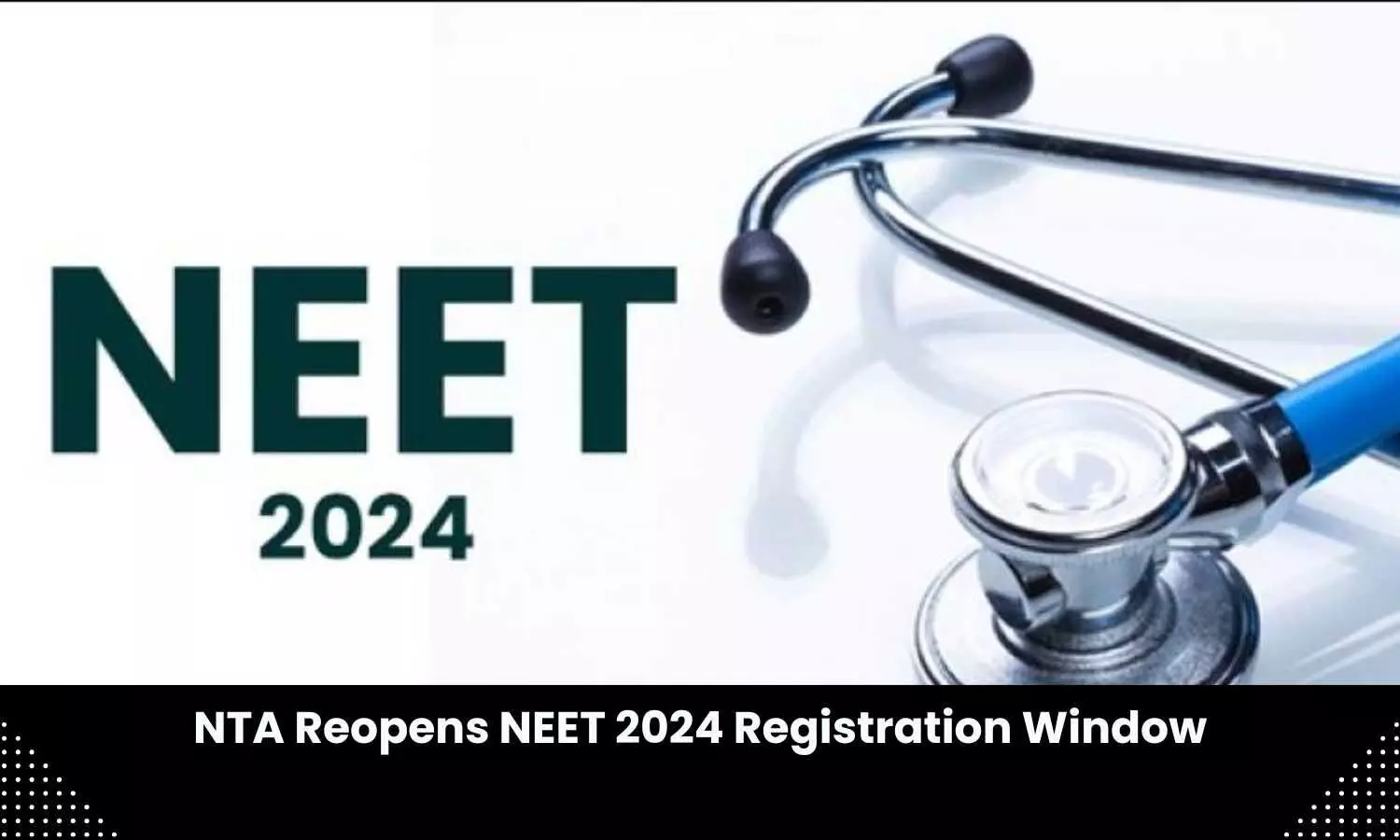Colorless, odorless gas likely linked to alarming rise in non-smoking lung cancer
Powered by WPeMatico
Powered by WPeMatico
Powered by WPeMatico
Powered by WPeMatico
Powered by WPeMatico

New Delhi: Pointing out that the current declaration forms are difficult and time-consuming to fill, the doctors have urged the National Medical Commission (NMC) to reconsider the need for these extensive forms required to be filled by residents and faculty during NMC inspections.
As per the current rules, at the time of inspection by the Apex Medical Regulator, all the faculties and resident doctors are required to submit a declaration form for the purpose of verification.
Writing to NMC, the Federation of Resident Doctors Association (FORDA) recently pointed out that the current declaration form used for verification spans a staggering nine pages and demands detailed information “much of which remains unchanged and need not be resubmitted with each inspection”. Hence, the doctors have asked the NMC to consider accepting smaller declaration forms during inspections for established and verified medical professionals.
“While we acknowledge the necessity of documenting existing manpower within institute. We find much of the information requested to be unnecessary repetition. needlessly burdening both the professionals and administrative staff,” the association said.
FORDA highlighted that the declaration form requires attachments of essential documents such as qualification degrees, Aadhar, and PAN cards. “In an era of digitalization championed by our Honourable Prime Minister Narendra Modi ji, this practice stands in stark contrast to the ideals of a digital India,” the association mentioned in the letter.
Referring to the prevalent system of Aadhar-based biometric registration at various levels throughout the career of a professional, FORDA opined that the “repeated submission of this data is not only redundant but also poses a significant risk to the privacy of professionals.”
“Regrettably, many institutes lack robust systems to safeguard such sensitive information, leaving professionals vulnerable to privacy breaches in the event of a data leak. Furthermore, the aftermath of each inspection often entails the submission of multiple online Google forms and Excel sheets, further exacerbating the already burdened plight of residents and its assessors. This unnecessary exercise not only undermines efficiency but also detracts from the core focus of medical education and practice,” it further mentioned in the letter addressed to the NMC Chairman.
Considering this, the association has urged the top medical regulator to reconsider its current approach and explore the possibility of adopting smaller declaration forms for established and verified professionals. FORDA has urged the Commission to digitalise the process, which would ultimately reduce the enormous paperwork. “By doing so, the process can be streamlined, alleviating the administrative burden on both parties involved,” it added.
Pointing out that in certain institutes this data submission occurs biannually, underscoring the urgent need for a more thoughtful and modified approach, the association has urged NMC to take proactive steps to address these issues and ensure a smoother, more efficient process for all stakeholders involved.
Commenting on the matter, the President of FORDA, Dr. Aviral Mathur said, “Everytime an inspection happens, ALL the faculty and resident workforce have to RE-DEPOSIT their important details in paperwork. When a professional has once been verified, cannot the institution just issue a smaller declaration for the same, since some details never change. This will save a lot of paperwork and also avoid potential breach of vital identification data.”
“Nowhere else are such verifications done. In an era of digitalisation, this is a rudimentary practice which merits careful rethinking,” it further added.
Powered by WPeMatico

Recently, H5N1 bird flu has been making headlines due to concerns about its potential to cause a pandemic. This virus, primarily affecting avian species, has sparked global attention amid fears of a potential outbreak that could be significantly more severe than Covid-19. Experts warn that if H5N1 were to mutate into a form capable of human-to-human transmission, it could result in a devastatingly high mortality rate, estimated at 60%.
Powered by WPeMatico

Through a public notice, the National Testing Agency (NTA) has announced the reopening of the registration window for the National Eligibility-cum-Entrance Test for (Undergraduate) courses- NEET UG 2024.
Powered by WPeMatico

Kozhikode: In a distressing incident reported in Kozhikode, a retired doctor fell victim to a marriage scam orchestrated by a gang of four who duped him of Rs 6 lakh, a phone and a laptop.
The doctor, who had advertised his interest in marriage through a newspaper, was targeted by individuals identified as Irshana, Rafi, Majeed, and Sattar, hailing from Kasarkot Kanhangad.
According to the doctor’s complaint filed with the Nadakavu police, the accused contacted him after seeing his advertisement and engaged him in numerous discussions, gradually gaining his trust.
Also read- Karnataka Doctor Loses Rs 16.5 Lakh To Fraudster Posing As Delhi Police Official
At first, the doctor was not interested in the marriage proposal brought up by the group but eventually, he agreed. Consequently, the group showed the woman from Kasargod and the doctor liked her.
As per a Kaumudi news report, the doctor had a liking for the woman, so the gang booked a hotel room close to Kozhikode railway station. Some people, presented by the gang as the woman’s family, also stayed at the hotel. Eventually, a wedding was organized, and separate rooms were assigned to the ‘groom and bride’ in the hotel.
To dupe the doctor, the gang informed the doctor about some monetary assistance as the gang would look for a rented house in the city so that the doctor and the woman could stay after marriage.
The group took an advance of Rs 6 lakh claiming that they had arranged a house in Nadakkavu and the money would be given to the house owner. The doctor immediately handed over the money to the gang.
On the way to visit the new house, the doctor asked the group to look after his belongings as he wanted to enter a Mandir. Taking the opportunity, the gang took his bag which contained a phone and laptop and fled away from the spot.
Realizing he had been deceived, the doctor attempted to contact the fraudsters multiple times to no avail. Subsequently, he reported the incident to the police, prompting them to register a case of fraud against the four fraudsters.
The police investigation is ongoing, with efforts underway to locate and apprehend the perpetrators.
Also read- Pune Doctor Duped By Fraudsters In Drug Parcel Scam, Loses Rs 1 Crore
Powered by WPeMatico

UK: A coronary sinus reducer (CSR) implant showed a symptom alleviation benefit for people with stable coronary artery disease and refractory angina, according to a small placebo-controlled ORBITA-COSMIC trial.
“The number of self-reported daily angina episodes shifted downward significantly among people randomized to the Neovasc Reducer intervention instead of a sham procedure (OR 1.40),” the researchers reported at the 2024 American College of Cardiology (ACC) conference. The findings were published in The Lancet.
However, despite the purported mechanism of benefit of the device, there was no improvement in myocardial blood flow in ischemic segments with the coronary sinus reducer over placebo (difference 0.06 ml/min/g).
The coronary sinus reducer is an hourglass-shaped stainless-steel mesh percutaneously implanted in the coronary sinus to reduce angina. It is the only antianginal therapy that acts on the cardiac venous circulation and is proposed to reduce angina in patients with stable coronary artery disease by improving myocardial perfusion.
Michael J Foley, Imperial College Healthcare NHS Trust, London, UK, and colleagues aimed to measure the efficacy of CSR implant, compared with placebo, on myocardial ischemia reduction and symptom improvement.
For this purpose, the researchers conducted the ORBITA-COSMIC trial at six UK hospitals. Patients aged 18 years or older with angina, ischemia, stable coronary artery disease, and no further options for treatment were eligible. Before entering a 2-week symptom assessment phase, in which patients reported their angina symptoms using a smartphone application (ORBITA-app), all patients completed a quantitative adenosine-stress perfusion cardiac magnetic resonance (CMR) scan, symptom and quality-of-life questionnaires, and a treadmill exercise test.
Patients were randomly assigned in a 1:1 ratio to receive either CSR or placebo. Following the CSR implantation or placebo procedure, patients entered a 6-month blinded follow-up phase in which they reported their daily symptoms in the ORBITA app. All assessments were repeated at six months.
The study’s primary outcome was myocardial blood flow in segments designated ischaemic at enrolment during the adenosine-stress perfusion CMR scan. The primary symptom outcome was the number of daily angina episodes.
Following were the study’s key findings:
· Between May 26, 2021, and June 28, 2023, 61 patients were enrolled between 2021 and 2023, of whom 51 (86%] male) were randomly assigned to either the CSR group (n=25) or the placebo group (n=26). Of these, the intention-to-treat analysis included 50 patients (24 in the CSR group, and 26 in the placebo group).
· 57% of 800 imaged cardiac segments were ischaemic at enrolment, with a median stress myocardial blood flow of 1·08 mL/min per g.
· Myocardial blood flow in ischaemic segments did not improve with CSR compared with placebo.
· The number of daily angina episodes was reduced with CSR compared with placebo (OR 1·40).
· There were two CSR embolization events in the CSR group, and no acute coronary syndrome events or deaths in either group.
ORBITA-COSMIC trial did not confirm the prespecified hypothesis that CSR’s mechanism of action consists of an increase of perfusion in ischaemic myocardial segments. However, the imaging data suggested a possible redistribution of perfusion towards the subendocardium in ischaemic segments.
The CSR, however, produced a clear reduction in angina frequency reported by patients, which developed gradually over weeks.
“These data provide evidence for CSR use as an antianginal therapeutic option for patients with refractory angina, myocardial ischemia, and stable coronary artery disease,” the researchers concluded.
Reference:
Foley MJ, et al “Coronary sinus reducer for the treatment of refractory angina: a randomised, placebo-controlled trial (ORBITA-COSMIC)” ACC 2024.
Powered by WPeMatico

Lucknow: The Department of Sports Medicine at state-run King George’s Medical University (KGMU) has introduced a minimally invasive surgical technique to address a rare and debilitating hip condition known as hip synovial chondromatosis. Affecting only one in a lakh individuals, this condition causes severe pain and mobility limitations.
This innovative approach, a first for the city, promises to spare patients the risks associated with traditional open surgery, according to experts.
Recently, the department successfully performed an arthroscopic procedure on a 20-year-old patient named Himanshu Singh, who had been struggling with the condition for three years. Despite seeking consultations with orthopaedic specialists previously, Singh’s condition had remained undiagnosed.
Also Read:KGMU to kickstart its kidney transplant programme, once again
Sports medicine faculty, Prof. Abhishek Saini said that the hip joint’s lining, the synovium, typically secretes fluid to lubricate the joint and facilitate smooth movement. However, in synovial chondromatosis, the synovium malfunctions, leading to the growth of abnormal cartilage, which can break loose and make pebble-like structures, reports IANS.
Patients afflicted with this condition often encounter abrupt joint locking, excruciating pain, and difficulties performing routine activities such as sitting cross-legged or walking.
Unfortunately, conventional X-rays may not always detect this condition, resulting in a misdiagnosis.
Furthermore, traditional open surgery for this ailment may jeopardise the hip’s blood supply, potentially necessitating joint replacement in the future.
According to an IANS report, Saini explained, “Arthroscopy allows surgeons to visualise and operate inside the joint through small incisions. It is an effective method for removing loose cartilage fragments and other aberrant tissues, thereby alleviating pain and enhancing joint mobility”.
The introduction of this minimally invasive technique underscores KGMU’s commitment to advancing medical care and providing innovative solutions for complex orthopaedic conditions, ultimately enhancing the quality of life.
Powered by WPeMatico
